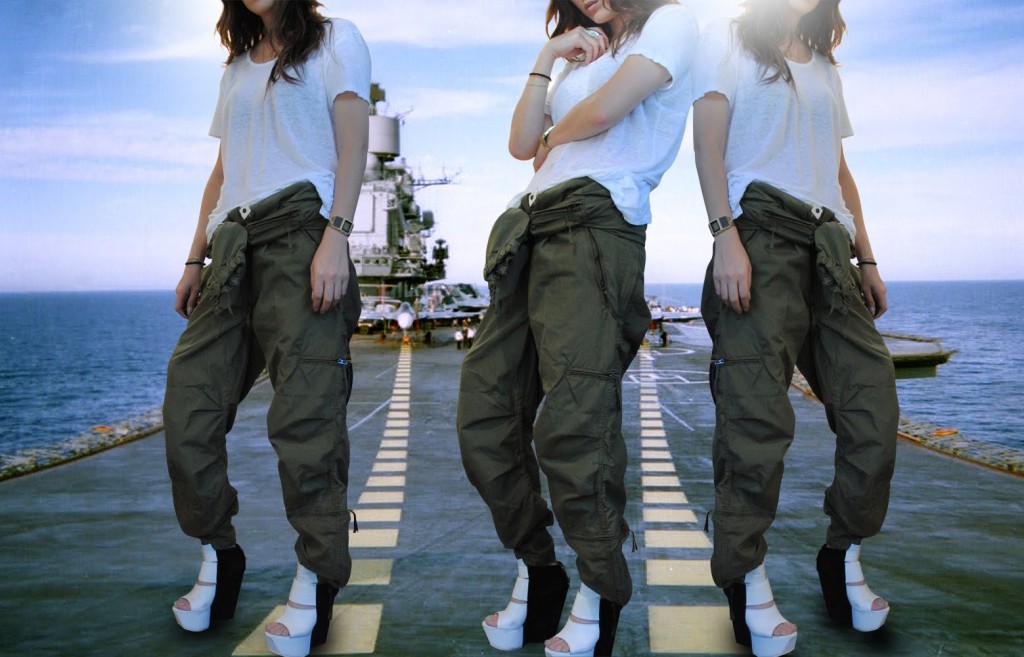Every warfare specialty has its own language, but Naval Aviators have elevated slang to an art form. Here are a few terms that only make sense when said between brownshoes ambling about the boat:
1. “Speed of heat”
To move through the sky at a rapid clip, as in “you were going the speed of heat when you came into the break.”
2. “Full blower”
When an aircraft is at max afterburner.
3. “Bust the number”
“The number” is Mach 1.0, so busting it means going supersonic.
4. “Making ‘Vapes”
Under the right meteorological conditions, an airplane in a high-G turn can disturb the air to the degree that vapor clouds (“vapes”) form around control surfaces.
5. “Pop the boards”
To deploy the speed brakes, generally used to slow an airplane down.
6. “Three in the green”
In older model airplanes the verification of the landing gear in a “down and locked” position was a green light, so if a pilot reports “three in the green” it means he has his gear safely down.
7. “Wheels in the well”
When the landing gear is raised the wheels move into the wheel well. Aviators refer to the the act of taking off as being “wheels in the well,” as in, “we’ll shoot for being wheels in the well at 1400 local.”

8. “Speed jeans”
Another name for a G-suit.

9. “Zoom bag”
Another name for a flight suit, the uniform Naval Aviators pride themselves on never, ever switching out of during a deployment.

10. “Pull chocks”
Chocks are blocks placed around the tires to ensure an airplane doesn’t roll while parked, and they’re “pulled” when an airplane is ready to launch. In more general terms, to “pull chocks” means to leave, as in, “All right, dudes, this place is out of beer. It’s time to pull chocks.”

11. “FOD”
Acronym for “foreign object debris” — stuff that can get sucked into a jet engine and do catastrophic damage to the turbine blades. More generally, when something is bad, Naval Aviators might refer to it as “FOD,” as in, “that slider I just ate at midrats was total FOD.”
12. “The Dirty Shirt”
There are two wardrooms on an aircraft carrier. Wardroom One is all the way forward on the same deck level as the squadron ready rooms and is referred to as “The Dirty Shirt” because, unlike Wardroom Two where officers have to be in the uniform of the day (usually khakis), crews can wear flight suits and/or flight deck jerseys.
13. “Clue-do”
When an airplane can’t communicate because of equipment failure it is called “nordo,” which is short for “no radio.” Clue-do is short for “no clue,” as in, “Is it just me or is the skipper totally clue-do?”
14. “Nugget”
A first-tour aviator, an unpolished hunk of material waiting to be shaped by his or her surroundings.
15. “Dash Last”
An airplane’s position within a formation is annotated by a dash number — for instance, the flight lead is dash one. Aviators refer to being at the end of something as “Dash last,” as in, “I was dash last in that 5K I ran last weekend.”
16. “Severe Clear”
Great weather conditions, not just clear of clouds but severely clear of clouds.
17. “Bug out”
The act of exiting a dog fight rapidly in order to survive to return another day.
18. “Hanging on the blades”
Flying a max endurance profile to reduce fuel consumption is often described by pilots as “hanging on the (turbine) blades,” which is a reference to setting the engine power as low as possible to stay airborne.
19. “Banging off the stops”
When a pilot moves the control stick aggressively — either by design or absence of technique — he is “banging off the stops” — “stops” being the physical limits of stick movement.


